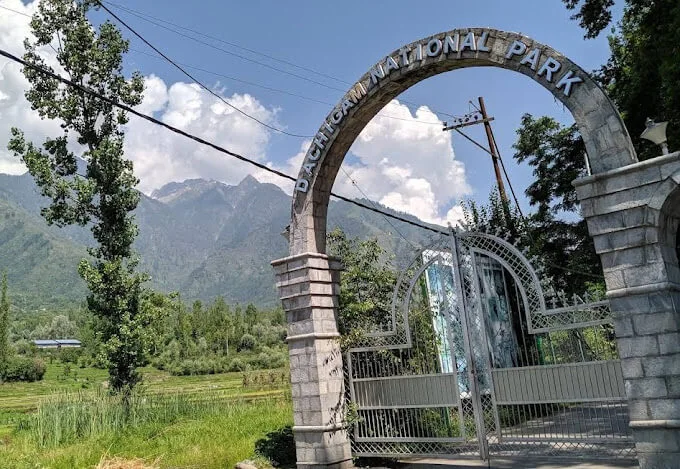Exploring Dachigam National Park: A Hidden Gem of Kashmir's Wildlife
Dachigam National Park is a beautiful place in Jammu and Kashmir, not too far from the city of Srinagar. It is home to many animals and plants. One of the most spectacular animals you can see there is the rare Hangul deer, also known as the Kashmir deer. This park is a great place for people who love nature, whether you like to watch birds, take photographs, or just enjoy the outdoors. Dachigam has a peaceful feel that makes it a great place to visit and see the beauty of the Himalayas.
How to reach Dachigam National Park
1. By Air
The nearest airport to Dachigam National Park is Srinagar International Airport, located about 22 km away. Regular flights connect Srinagar with major Indian cities like Delhi, Mumbai, and Bangalore. From the airport, you can hire a taxi or use local transport to reach the park in under an hour.
2. By Train
The closest railway station is Jammu Tawi, which is approximately 300 km from Srinagar. It is well-connected to major cities across India. From Jammu, you can take a taxi, bus, or connecting flight to Srinagar and then proceed to Dachigam by road.
3. By Road
Dachigam is around 22 km from Srinagar City and can be easily accessed by taxi or private vehicle. The roads are in good condition, and the drive offers beautiful views of the surrounding valleys and mountains. Local buses and shared cabs also operate from Srinagar to nearby areas.
Best time to visit Dachigam National Park

The best time to visit Dachigam National Park is from April to October. The weather is good at this time of year, and the park looks beautiful. You will see a lot of green plants, colourful flowers and many animals. Summer and early fall are a great time to see special animals like the Hangul deer and a variety of birds. The park is closed in winter as there is too much snow, making it difficult to go inside and see the animals.
Travel tips for visiting Dachigam National Park
1. Start Early: Wildlife is most active in the early morning, so plan your visit around sunrise for the best chances of spotting animals.
2. Wear Comfortable Clothing: Opt for neutral-colored clothes and sturdy walking shoes, as you’ll likely be trekking through forested trails.
3. Carry a Valid ID: Entry to the park requires registration, so keep an official ID like an Aadhar card or passport handy.
4. Hire a Local Guide: Guides can help you navigate the park, spot wildlife, and share valuable insights about the area’s biodiversity.
5. Pack Essentials Only: Bring water, light snacks, sunscreen, and binoculars, but avoid carrying plastic or anything that could harm the environment.
6. Respect Wildlife and Silence: Maintain distance from animals and keep noise levels low to avoid disturbing the natural habitat.
Conclusion
Dachigam National Park is not just a place to see wildlife but also a tranquil escape into nature where you can see the untouched beauty of Kashmir’s landscapes and the unique animals that live there. Whether you love nature, taking photos of wildlife, or just love exploring new places, the park’s peaceful paths and variety of plant and animal life make for an amazing adventure. By planning carefully and respecting the fragile ecosystem, a trip to Dachigam offers excitement and a chance to connect more deeply with the environment.
People also ask about Dachigam National Park
1. Where is Dachigam National Park located?
Dachigam National Park is located about 22 km from Srinagar in the union territory of Jammu and Kashmir, India.
2. What is Dachigam National Park famous for?
The park is best known for being the last habitat of the endangered Hangul deer (Kashmir stag) and for its diverse Himalayan wildlife.
3. What are the visiting hours for Dachigam National Park?
The park is generally open to visitors from 10:00 AM to 5:00 PM, but entry may require prior permission from forest authorities. It is advisable to confirm timings before planning your visit.
4. Is a permit required to visit the park?
Yes, visitors need to obtain permission from the Wildlife Department or local forest authorities in Srinagar before entering the park.
5. Can I explore the park without a guide?
While it’s possible, it’s highly recommended to hire a local guide for a better understanding of the park’s wildlife, trails, and safety precautions.
